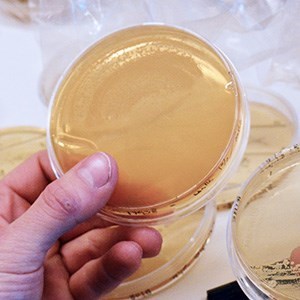Contact
ingvar.sundh@slu.se, 018-673208

Microorganisms can replace chemical pesticides with biological control, be used for the production of biofuels, clean or prevent environmental contaminations by toxic substances and convert organic forestry wastes into fat and protein with use as feed base for chickens and fish.
Mankind have for a long made good use of microorganisms, mostly in the production and conservation of food stuffs. Today, we have come to better understand the enormous potential that beneficial microbes can have also in other areas. Microorganisms can for example, contribute to reduced environmental problems in agriculture by replacing chemical pesticides with biological control or help to reduce leaching of nutrients through plant growth promotion. They can also be used for the production of biofuels and clean or prevent environmental contaminations by toxic substances as well as to biologically convert organic forestry wastes into fat and protein with potential use as feed base for chickens and fish.
Our different project groups are briefly described below.
Biological products based on microbial agents most often depend on that the microorganisms are alive and active when the time comes to practically use them. However, keeping microorganisms in an active state while storing them is impractical and very difficult to accomplish. Instead, stabilization by a formulation process and, when appropriate, drying the formulated microorganisms is a way to produce manageable, cost-effective and storage-stable bio-products. In our group we study dehydration stress mechanisms of microorganisms as well as the role of the formulation ingredients and the parameters of the dehydration process to provide a better understanding of both biological and abiotic factors involved in microbial long-term stabilization.
Over millennia of actively taking advantage of the services provided by microorganisms – e.g. yeasts and moulds for food and feed fermentations – inferences regarding safety have relied on trial and error and previous experience. However, large-scale culture of single microbial isolates and production of goods containing living microorganisms motivates a careful consequence analysis. In these projects, new and better methodology for safety assessment of microorganisms is developed, with special emphasis on use of beneficial organisms for pest and disease control.
Some applications with microorganisms are strictly regulated and need pre-market approval, while others are principally unregulated. Thus, safety assessment is tightly interconnected with the prevailing regulatory conditions.
Read more about our research on safety assessments and regulatory policy of beneficial microorganisms here.
ingvar.sundh@slu.se, 018-673208